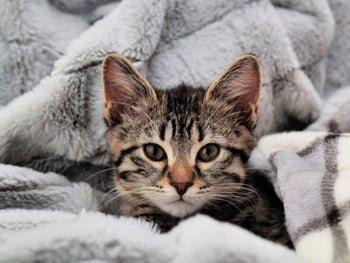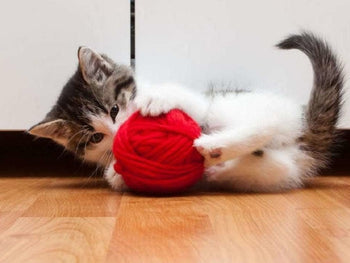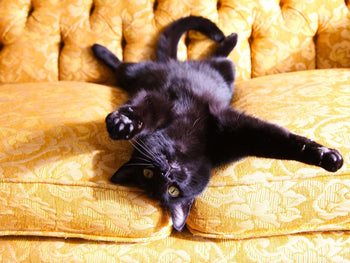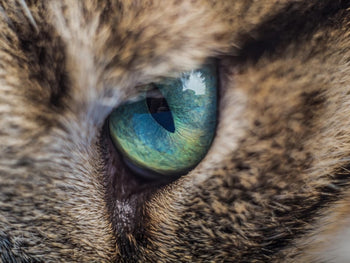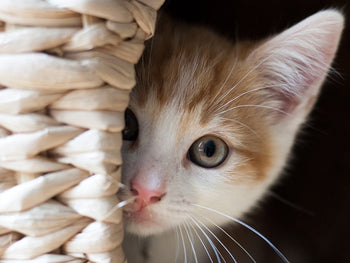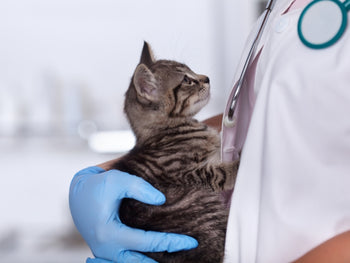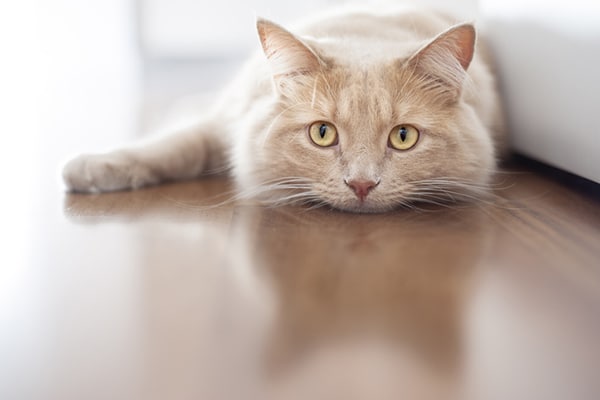
It usually comes without any warning: all of a sudden, your cat exhibits signs of pain and can't seem to use one or even both of its rear legs. Although there are several causes behind the "cat losing control of back legs" issue, the most severe one is aortic thromboembolism, a dangerous ailment that could lead to fatal consequences. Pets that are suffering from heart diseases and alike are highly vulnerable to aortic thromboembolism. As the condition causes a great deal of discomfort to your cat and potentially life-threatening, it's essential that you know how to act.
Want help your fluffy friend but don't know much about aortic thromboembolism in general? In that case, this article got something you could use. Right down below, you should find everything you need to keep in mind when it comes to aortic thromboembolism, what causes it and proper treatments. Overall, while the issue of "cat losing control of back legs" is indeed unnerving, it's possible to minimize damage. As long as you act fast and prudent, adorable your cat would have a very good chance of regaining the use of its rear leg.
Aortic Thromboembolism: What Is It
Generally speaking, aortic thromboembolisms start once a blood clot that originally forms in the cat heart travels down the blood vessel until it gets stuck. At that point, the clot shutdown the vessels and the arteries of the rear leg would be starved of blood. Since the blood blockade is extremely painful, your cat should cry out in pain constantly. Considering the fact that the rear legs are paralyzed due to the blood shortage, your cat would drag itself around using mainly the front legs. When that happens, it's of utmost importance that you take your pet to the vet as soon as possible.
Notable Symptoms Of Aortic Thromboembolisms

Aside from the rear leg dragging and the constant crying, there are other signs that signify aortic thromboembolism in cats. In most of the case, the rear legs of a cat that is suffering from aortic thromboembolisms would feel cool and have slightly bluish skins. Because the rear leg weakness could be caused by a lot of issues including potential bone fractures so be thoughtful and exam your cat gently. In any case, promptly wrap your pet in a soft blanket and then take him/her to a veterinary clinic. Only qualified vets are able to diagnose the "cat losing control of back legs" issue and aortic thromboembolism in particular.
Treating Aortic Thromboembolism In Cats
It goes without saying that in order to treat aortic thromboembolism, you have to take care of the blood clot. For most of the time, the vets would use specialized "clot buster" medications couple with blood thinners to prevent resurgences. In extreme scenarios, the cat might have to go through surgery to remove the clot. The process of administering necessary medications should last around 48 hours so try to keep your composure. If the cat happens to pant heavily, the vets could place an oxygen mask to offer assistance with the breathing.
During the recovery period, you must keep your cat immobile and observe him/her carefully.
Check us out for astonishing cat tips & facts!
Aortic Thromboembolism: Frequently Asked Question
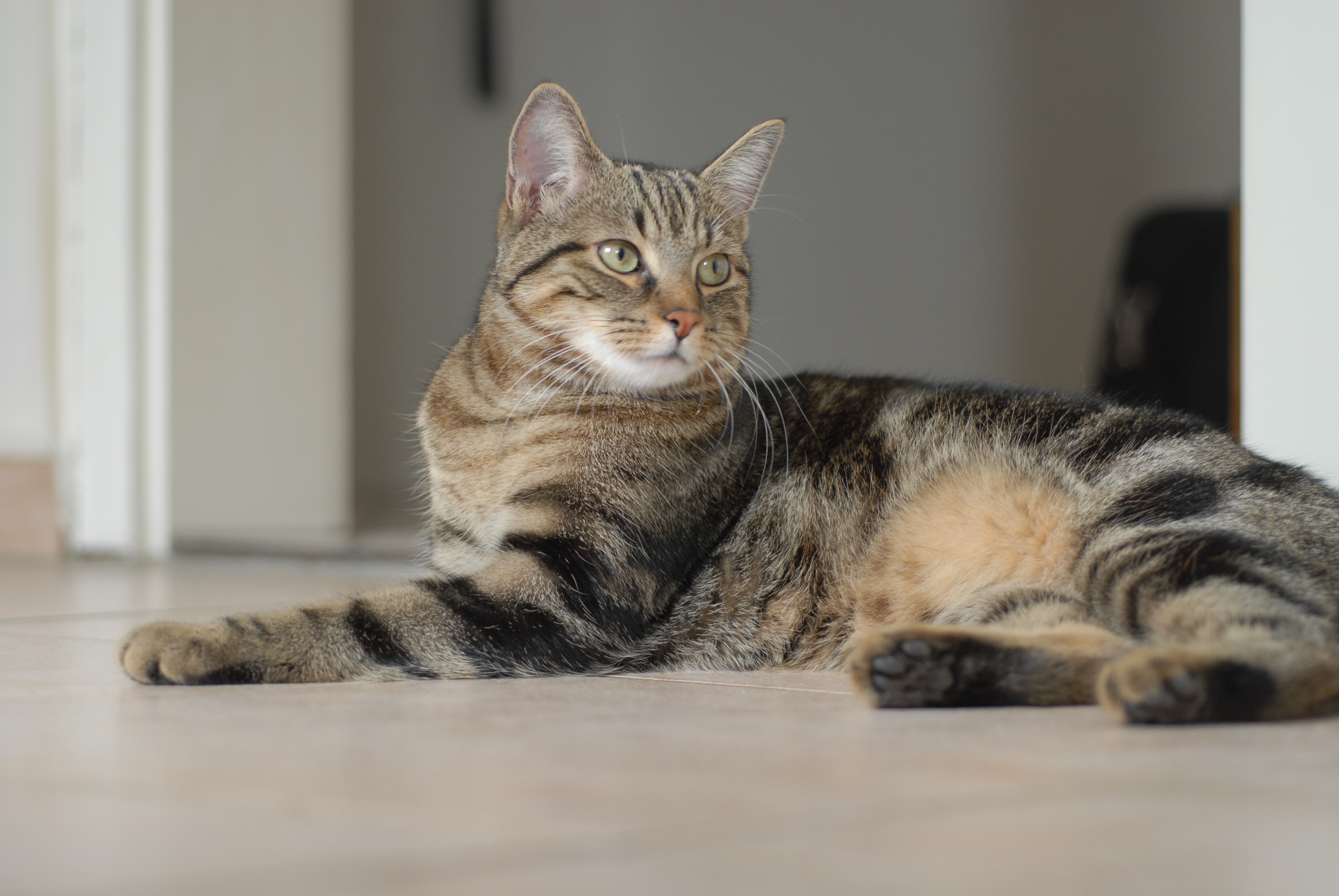
Is it possible for my cat to regain its mobility?
Generally speaking, there is no guarantee that an ordinary cat could recover from aortic thromboembolisms even with timely treatments. In certain cases, cats that make it through first cloth blockage could experience another blockage within a year or so. Couple with the underlying health condition that leads to the forming of blood clots in the first place, the cat would likely suffer over time. Nonetheless, the chance of complete recovery is good if the cloth blockage is detected early and only affects one leg.
Should I consider humane euthanasia?
No one would decide to end the life of their beloved pet early when there is still a slim chance of improving the overall situation. However, it's also tough to see your fluffy friend suffer just because you are unable to make your mind. In this particular case, aortic thromboembolism in cat often cause a lot of discomforts and in the advanced stage, even medication cannot regulate the pain. That is why you have to take some time to think about whether you should resort to euthanasia or not. Consult with the vets to acquire advice but in the end, it's up to you to make the call.
Aside from aortic thromboembolism, is there anything else that could cause the issue of "cat losing control of back legs"?
As mentioned above, there are various things that would lead to rear leg weakness in cat and aortic thromboembolism is among the most prominent ones. Excluding blood clot blockade, the "cat losing control of back legs" issue could be caused by the following health problems.
Diabetes
In some cases, rear leg weakness is an early sign of diabetes as the bloodstreams are overwhelmed with sugar which steadily weakens the muscle tissues. Needless to say, once its muscles just refuse to work properly, your cat would have a hard time moving around.
Arthritis
Senior cats often suffer from arthritis, a problematic condition that impairs their mobility through the steady degeneration of the joints. While arthritis could develop in every joint, it could easily lead to rear leg weakness in cats if it happens to hit the back joints.
Trauma
The outdoors carries many dangers (car, dog,…) that could inflict trauma on your cat and damage its spine or leg. If you suspect that your cat could not move it rear leg due to trauma, ask the vets to take X-rays for reliable results.
Epilepsy
Cats that are suffering from epilepsy not only experience seizures but also occasionally lose the ability to control their legs. Once again, you have to rely on the vets for advice and medication to put an end to the issue.
Genetic
Certain breeds like Himalayans, Persians and others have vulnerable to hip dysplasia, a genetic defect. The joints of such cats tend to develop abnormally and so they have some trouble putting their rear leg to use from time to time.
Find out more about cats' health issues at Cattybox!
